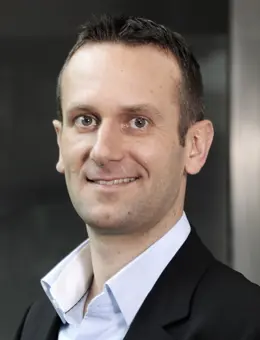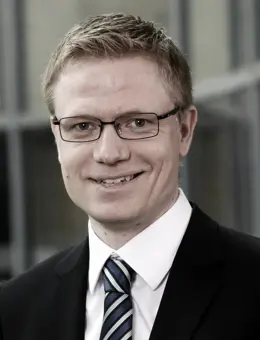Emerging Market Blended Debt I USD Acc
Emerging Markets
Profile
The Investment Case for EM Sustainable Blended Debt
- Emerging markets and Frontier countries generally belongs to the low or middle-income parts of the World when measured on GDP per capita.
- The emerging debt asset class is growing, yet it still only counts for approximately 20% of the world’s total GDP thus far below levels found in the developed markets. At the same time, roughly 70% or more of the World’s populations live in the 80 most common emerging market countries, so the long-term opportunities for investors are vast and well founded.
- Emerging countries typically have growing populations and lower capital bases compared to high income countries therefore they tend to grow structurally higher causing their income to converge towards that of more developed countries.
- When we consider sustainability in the context of this less developed part of the World, and especially with respect to sovereign debt, it is important to accept this fact and consider a broad set of indicators to understand the level of environmental (E), social (S) and governance (G) performance and its development. We must consider how to set the boundaries within the investment universe by analyzing good ESG performers from poor ESG performers.
- The UN 2030 Development Goals focus on the inequality in resources, income and institutional strengths that prevents emerging countries from obtaining a sustainable future. Sydinvest actively use targeted data on the countries SDG performance to understand the ESG risks that influence each state’s willingness and capability to honor its debt obligations towards its creditors. We bring the SDGs directly into the investment process.
- The Sydinvest EM Sustainable Blended Debt Fund is an example of such a strategy.
Read our white paper about Introduction to ESG Integration and Sustainability Analysis of EM Debt
The ESG+ Strategy and the UN Sustainable Development Goals Index
- The fund invest in a blended portfolio of hard and local currency sovereign bonds issued from emerging market and frontier countries. The objective is to provide investors with excess returns to the unrestricted benchmark through active portfolio management.
- The fund invests with an active ESG approach that offers most extensive sovereign sustainability analysis developed by Sydbank. It includes more ESG data and tougher criteria compared to a traditional risk-based ESG analysis.
- The ESG+ approach includes the global SDG Index that tracks countries implementation of the UN Sustainable Development Goals for 2030, it explicitly excludes countries subject to weapons sanctions and it excludes quasi-sovereign companies involved in fossil fuels business areas. Finally, it aims to include green sovereign bonds where such opportunities emerge.
- The fund invests with an active conviction to select countries with good ESG and investment value as well as long-term upside potential.
- Countries and their state-owned companies must live up to the ESG criteria set out by the portfolio team. If not, they will be excluded and instead the team will invest into alternative high conviction allocations that offers better value and equal risk. Hence, the strategy does not aim to replicate the benchmark and will accept short-term performance deviations because of that.
- The Sydinvest EM Sustainable Blended Debt Fund offers investors a unique opportunity to invest with a normative and impact orientated view in emerging market bonds. To invest in emerging countries where the future path of investment value as well as fundamental human values are expected to thrive.
Want to know more?
The methodology to conduct the ESG screening and how it is integrated into the fund’s investment process is further described in this presentation prepared by Sydbank, the investment advisor to Sydinvest EM.
Request a fund presentation here
Meet the team behind it
Those who manage your investment
Read more
Thomas Brund
Head of EM Debt
Head of EM Debt - joined Sydbank EM Debt in November 2007 from the Danish asset manager Jyske Invest where he managed EM debt hard and local currency portfolios as Senior Portfolio Manager. His investment manager career began back in 1996 where he took management of Sydbank’s Danish fixed income portfolios. In 1998 he moved on to become fixed income analyst at Jyske Bank. In 2001, he assumed the role as Head of Fixed Income in Jyske Invest until 2005 where he decided to focus entirely on EM debt and participate in the launch the firm’s first EM local currency strategy.

Rune Juel Hansen
Senior Portfolio Manager
Senior Portfolio Manager - joined Sydbank EM Debt in October 2007 from the Danish bank Jyske Bank’s Emerging Markets Fixed Income Division where he held a position as Quantitative Analyst. Rune began his career in 2004 in Jyske Bank and worked closely with colleagues Thomas Brund and Phillip Blackwood on the EM debt strategies in Jyske Invest. Their partnership has continued in Sydbank where Rune has held the role as Senior Portfolio Manager covering a number of research responsibilities. Most notably is Rune’s skills in the quantitative research approach where he has made significant contributions to the Team’s Relative Value approach on EM FX and credit, specialist assets and EM Frontier markets.

Jens Erik Boesen
Senior Portfolio Manager
Senior Portfolio Manager - joined Sydbank EM Debt in May 2013 from a position as Senior Risk Analyst with DONG Energy Markets (the Danish national oil and gas exploration and production company) where he had primary responsibility on long term market risks including global macro and FX markets. Before assuming his role with DONG Jens Erik was an economist with the Danish Central Bank’s Market Operations Division, where he managed risk on the Central Bank’s FX Reserves.
Phillip Blackwood
Joined Sydbank EM Debt in October 2007 and since 2011 a partner with the Team as Adviser on exclusive basis. Phillip was born in Belfast, Northern Ireland, and lives in London UK since 2011 after spending 11 years in Denmark. In line with Sydbank’s core values of retaining valuable skills and nurse long term partnerships, Phillip has continued his relationship with the team through EM Quest Ltd; an FCA licensed investment advisory firm solely owned by Phillip with Sydbank as the only and exclusive client.

Hans Christian Bachmann
Senior Economist
Senior Economist - joined Sydbank EM Debt in 2007 from a position as Macro Analyst in Sydbank Markets where he started in 2004. Hans Christian has spent his entire career with Sydbank in research with a key focus on EM as well as the major Developed World macro economies and has contributed to the Team’s investment process through his development of the fundamental market research and global politics.

Anette Melchiorsen
Senior Portfolio Manager
Senior Trader - joined Sydbank EM Debt in 2007 from a position as trader in Sydbank Markets where she had been trading EM securities since her career in Sydbank began in 2001. Before assuming her position with Sydbank she held a position as Financial Controller with A.P. Moeller-Maersk from 1998.
Claus Juhl
Head of Fixed Income Research
Head of Fixed Income Research in Sydbank Asset Management and key responsible for the fundamental quantitative research and data management on all Fixed Income strategies. Claus assumed the role as Head in 2013 coming from a position as quantitative analyst in the same group since 2003 where he worked full time as part of the EM Debt Team from 2007 to 2011

Thomas Rytter
Quantitative Analyst
Quantitative Analyst with Sydbank’s Fixed Income Research, joined Sydbank EM Debt full time in 2011 from a similar position in the same group. He replaced Claus Juhl as the daily 1st contact and works closely with Claus Juhl and the rest of the group’s analysts on the Sydbank EM Portfolio System.
Returns (according to costs)
Returns
Per 29/01/25 02:47Today's Return %
Return Jan: +1.70 %
Return YtD -
Latest trends
| Emerging Market Blended Debt I USD Acc | Return | Return YtD |
|---|---|---|
| Latest trend | 1.70 % | - |
| Return benchmark | 1.71 % | -0.49 % |
Fund Holdings
Fund Holdings
Distribution by country
Distribution by country
| Country | Proportion | Change (%-Points) |
|---|---|---|
| Lithuania | 0.00 % | -0.13 % |
| Uruguay | 0.00 % | -0.32 % |
| Slovenia | 0.00 % | -0.34 % |
| Bulgaria | 0.00 % | -0.40 % |
| Ukraine | 0.00 % | -0.40 % |
| Oman | 0.00 % | -0.44 % |
| Sri Lanka | 0.00 % | -0.45 % |
| Paraguay | 0.00 % | -0.56 % |
| Seychelles | 0.00 % | -0.59 % |
| Other | 100.00 % | -95.05 % |
Distribution by region
| Region | Proportion |
|---|---|
| Latin America | 35.38 % |
| Asia | 21.96 % |
| Eastern Europe | 20.26 % |
| Africa | 16.99 % |
| North America | 6.64 % |
| Caribbean | 1.65 % |
| Middle East | 0.29 % |
| Other | -3.17 % |
Maturity Distribution
| Maturity Distribution | Proportion |
|---|---|
| 0-1 Year | 6.78% |
| 1-3 Year | 6.47% |
| 3-5 Year | 16.29% |
| 5-7 Year | 21.59% |
| 7-10 Year | 14.65% |
| 10+ Year | 34.22% |
| Total | 100.00% |
Distrubution by currency
| Base currency | Proportion |
|---|---|
| Other | 100.00 % |
See more
See less
Risk
Lower risk
Higher risk
- 1
- 2
- 3
- 4
- 5
- 6
- 7
Potentially lower rewards
Potentially higher rewards
Risk Scale
The risk indicator indicates the fund's risk level compared to other products. The classification may change and is not necessarily a reliable indicator of the future risk profile.
Distribution by issuer
| Distribution by issuer | Proportion |
|---|---|
| Mortgage bonds | 0.00 % |
| Government bonds | 0.00 % |
| QUASI-soverreign | 0.00 % |
| Company | 0.00 % |
| Cash | 0.00 % |
Duration
Rating Distribution
| Rating Distribution | Proportion |
|---|---|
| Average rating | NR |
See more
See less
Fees and Expenses
Fees and Expenses
| Fees and Expenses | Running approx. | Indirect Trade Cost | Subscription | Redemption |
|---|